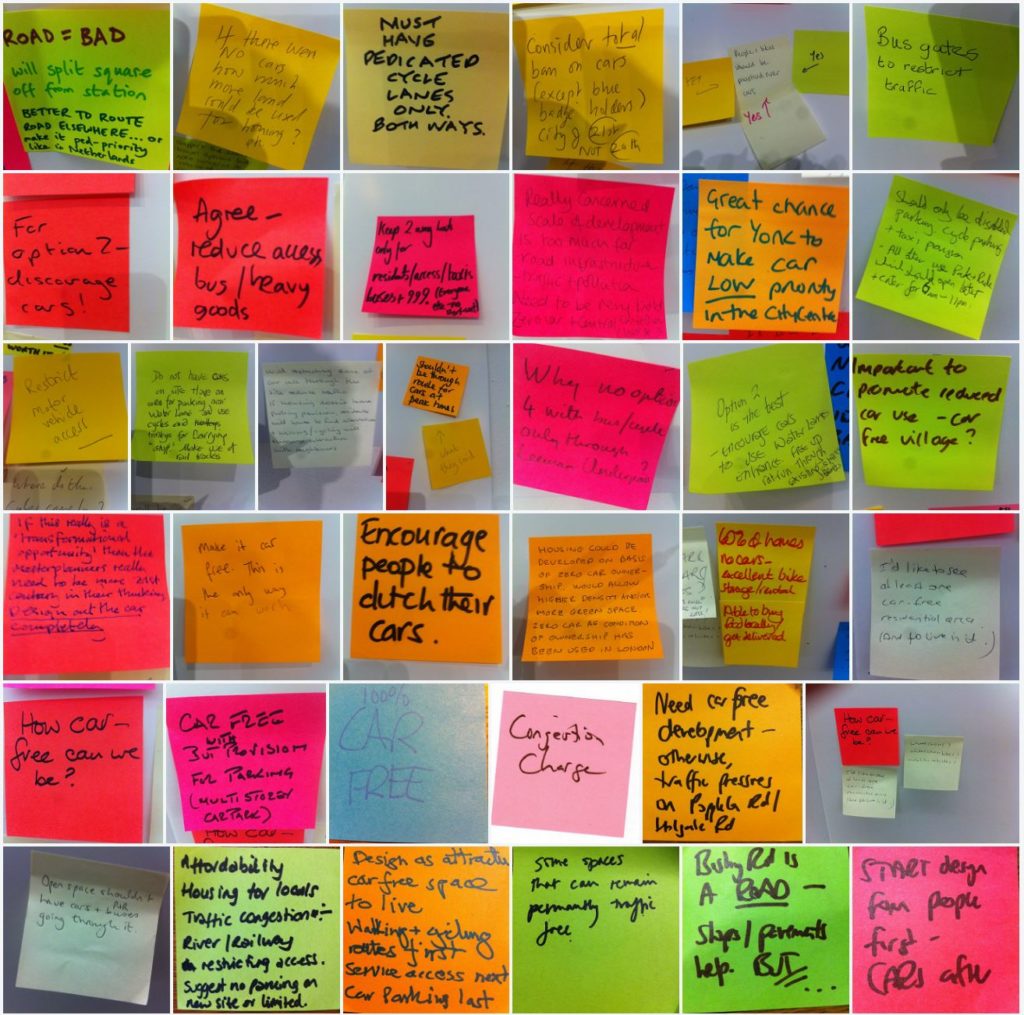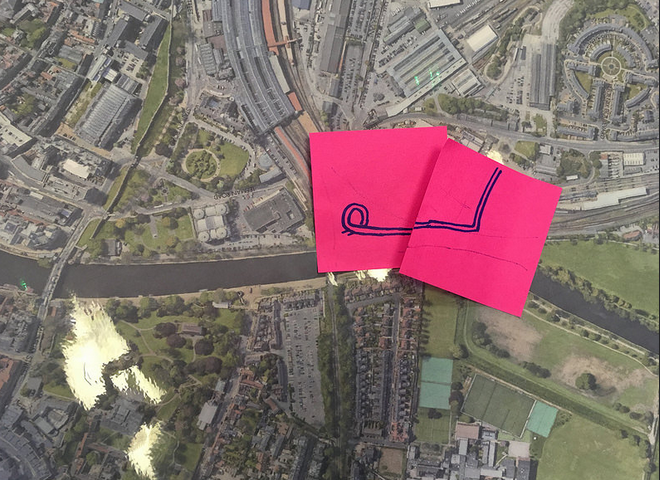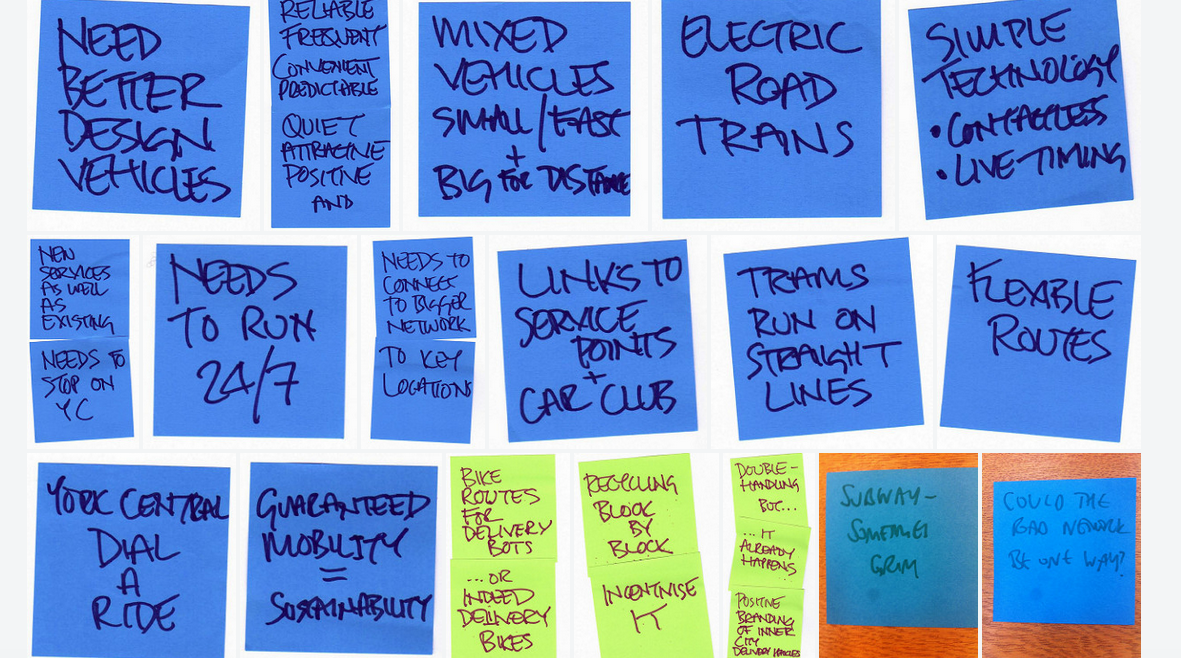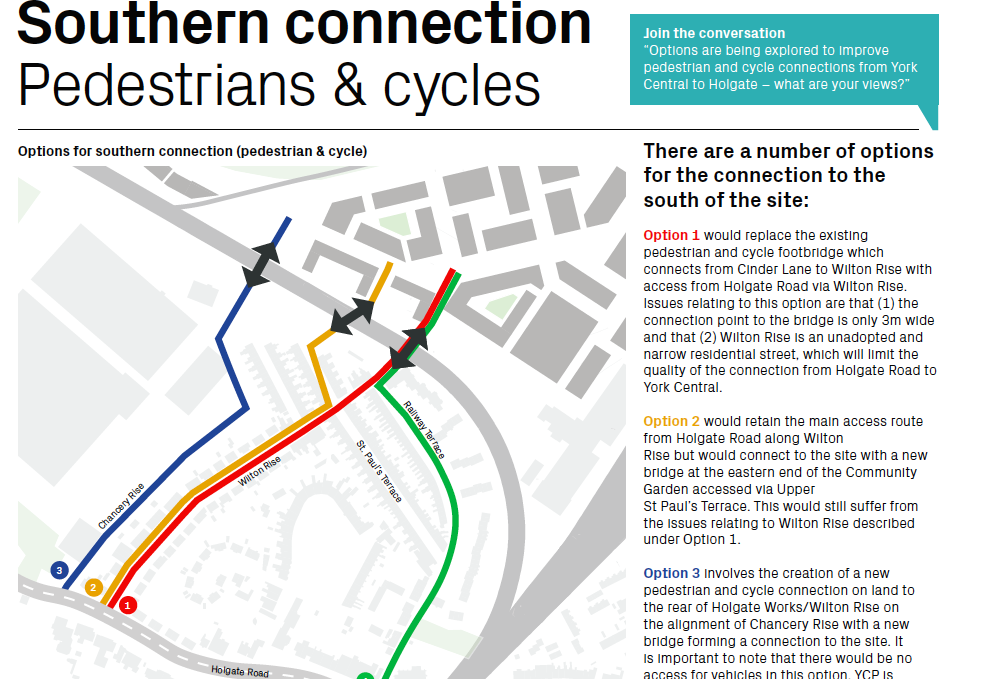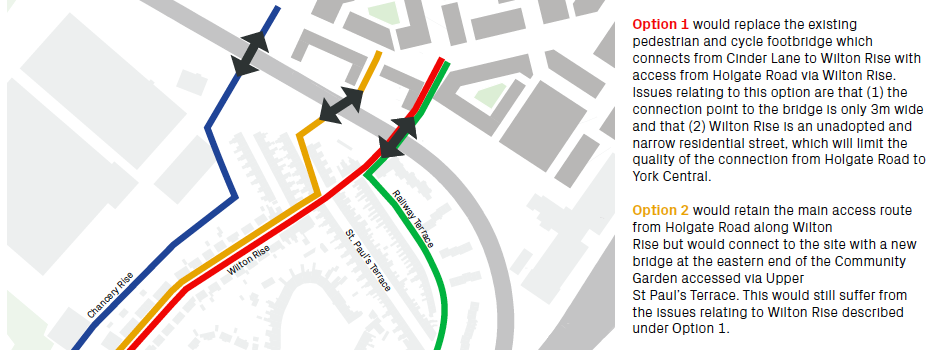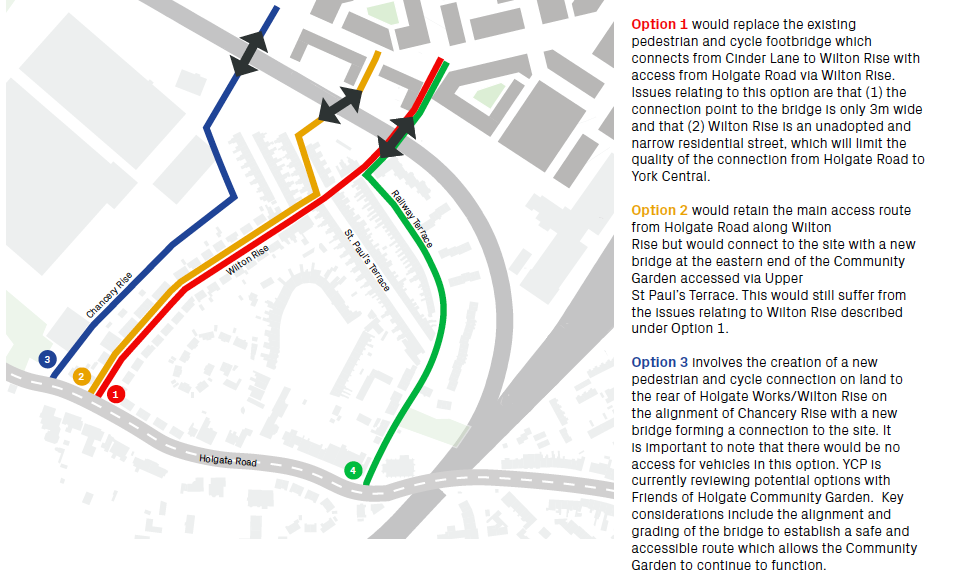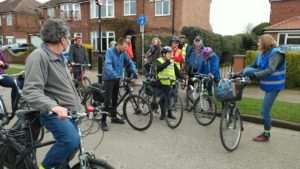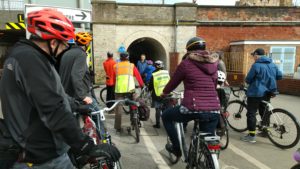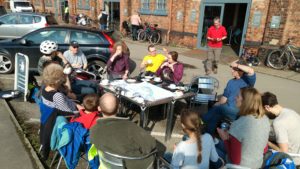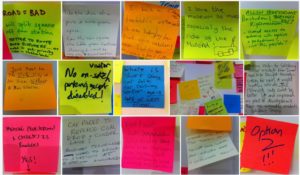My York Central – workshops on traffic impact and modelling – 14th and 20th September 2018
Introduction by Tony May
This and the planned subsequent workshop came from questions raised at previous workshops, suggesting there were questions from the public about the modelling assumptions and data. The aims of the session are:-
- To inform comments on the current and imminent planning applications (and it was pointed out that all comments / objections / etc should be directed to the planning authority, not to Arup /Tony / MYC)
- To frame possible further public input following approval of the application.
It was discussed/agreed that further modelling could not be carried out at this time (current data forms part of planning application, and Arup have no brief to carry out further work) but that existing modelling may easily yield further information, if requirements can be identified.
Notes taken during workshop 1 presentation 14th September 2018 by Anna Vickers.
The modelling approach uses a SATURN model of traffic movements for a morning peak hour and an evening peak hour. The base year is 2016/17, but they have used CYC’s 2033 model, which includes all of the effects of draft Local Plan developments and known road improvements such as the outer ring road. Their “do-minimum” has York Central and its access road stripped out; “do-something” involves adding it, with the assumptions described below.
Question about 2033 conditions: it was noted that the “do-minimum” reflects high levels of congestion resulting from the new developments anticipated in the Local Plan.
Assumption 1: The access road is provided, with the three variants for the Leeman Road Tunnel.
Assumption 2: Existing vehicle trips are maintained. This doesn’t mean parking is being re-provided for all uses. Approach was agreed with CoYC.
Assumption 3: Modelling based on max residential and max commercial development numbers combined (More than is actually possible). Arup are able to provide actual maximum combined possible numbers.
Assumption 4: Overall trip rates from new developments are estimated. Trip rates used are based on existing survey data for journeys made and modes used. CYC specified this approach.
Assumption 5: Total trip numbers from all new developments are calculated. While estimates of journeys for all modes are generated, only car trips are included in the model.
Assumption 6: Trips are assigned destinations, so that they can be loaded onto the network. This uses the approach adopted by CYC for the Local Plan.
Questions/responses re multi-storey car parks (MSCPs):- One is for station which is to replace part of existing provision and one is new provision for commercial development.
Point made re downsides of building more car parking (air quality etc) – Phil White explained rationale for number of spaces to be provided. TM summarised discussion:-
1. Should we replace existing parking like-for-like?
2. Much of the current car parking on York Central is associated with car-related business (hire, fleet, etc) which will go when site is developed.
3. Assumptions are being made about required provision for commercial development.
Questions/response re mode shares assumed in modelling. Vehicle (driving or passenger) split is 37% + 4% for residential area and 34% + 5% for commercial area. Question raised about mode share and CoYC policy; Trip rates and mode shares are based on standard methodology. Residential trip rates on surveys at nearby Phoenix Boulevard, commercial trip rates based on national database. Mode share is from 2011 census data. Trip rates don’t take into account future reductions in car trips resulting from policy changes.
Also noted modelling is separate from process of design. Parking spaces determined on basis of benchmarking of CoYC policy and recent developments across other cities, all in agreement with CoYC.
Question on variable traffic conditions: the model represents an average weekday.
Question on potential for reducing car use: the approach does not attempt to reflect the effect of other transport policies. It is thus a worst case assessment.
Anna Vickers then presented the results generated for Options 1, 2 and 3.
Impacts on ring road were discussed; uncertainty about how much impact any increased numbers represented (actual base figures not shown).
Difference in impact between Option 1 (Leeman Road tunnel as is) and Option 2 (Leeman Road tunnel revised to give signalised single vehicle lane) insignificant, so Option 1 dismissed as Option 2 gives benefits to walking/cycling.
Diagrams showing modelling of specific journey delays for vehicles on Poppleton Road / Holgate Road and Clifton / Bootham discussed. Again no assumption of mode shift. However, Arup view is that mode shift would be influenced by a number of factors and the modelling cannot definitively be stated to be an “over estimate” at this time.
Concluding discussion about further information requested:-
Lindsay Cowle asked about Bootham/Gillygate junction and modelling.
Dave Merrett asked about modelling for Lendal Gyratory.
Jonathan Tyler asked about strategic level issues:- the modelling shows there will be impacts on the city as a whole, but what can/will CoYC do? TM noted that York Central issues are actually Local Plan issues – all already evident in the 2033 “do minimum” analysis. DM commented that he felt all modelling for any planning applications will be based upon a deficient Local Plan.
Following the meeting TM drafted a list of requests for further information:-
- volume-capacity ratios in both peaks in the base and options 2 and 3 for their junctions 1, 4-13, and the five additional junctions: Bootham/Gillygate; Lendal Gyratory (two junctions); Clarence St/Lord Mayor’s Walk; Walmgate/Lawrence St (the latter two to show any impacts of re-routing around the inner ring road);
- the data on “impacted” junctions split by whether the impact is a 50 veh/h flow increase and/or a volume/capacity ratio of over 80% again for both peaks for the base and options 2 and 3;
- select link analyses either inbound in the am peak or outbound in the pm peak for Poppleton Rd, the new access road and Clifton, again for the base and options 2 and 3;
- pcu (passenger car unit)-km for the whole network for both peaks for the base and options 2 and 3 (to complement the data which they have already provided on delays and travel times);
- pcu-km, pcu-h and pcu-h in delay for the area within a cordon surrounding York Central and the city centre, for both peaks for the base and options 2 and 3 (to provide a clearer idea of changes in levels of congestion in the immediate area).
Anna Vickers had indicated that all of these should be possible, but later confirmed that (5) would take longer to produce and would not be available for the next meeting.
TM noted that Arup’s excellent presentation included more information than in the Transport Assessment. Phil White agreed urgently to check whether the presentation could be circulated and, if so, to do so as input to the subsequent meeting on 20th September.
DM and TM (and all present) noted appreciation for the work put in by Anna Vickers / Phil White / Susie Bathe in preparation for both these workshops.
…and here is a link to the Powerpoint presentation used by Susie during workshop 2 – which includes the presentation used by Anna during workshop 1 (many thanks to Arup for providing this and York Central Partnership for authorising its use):- Traffic modelling workshop 1-2 PPT
